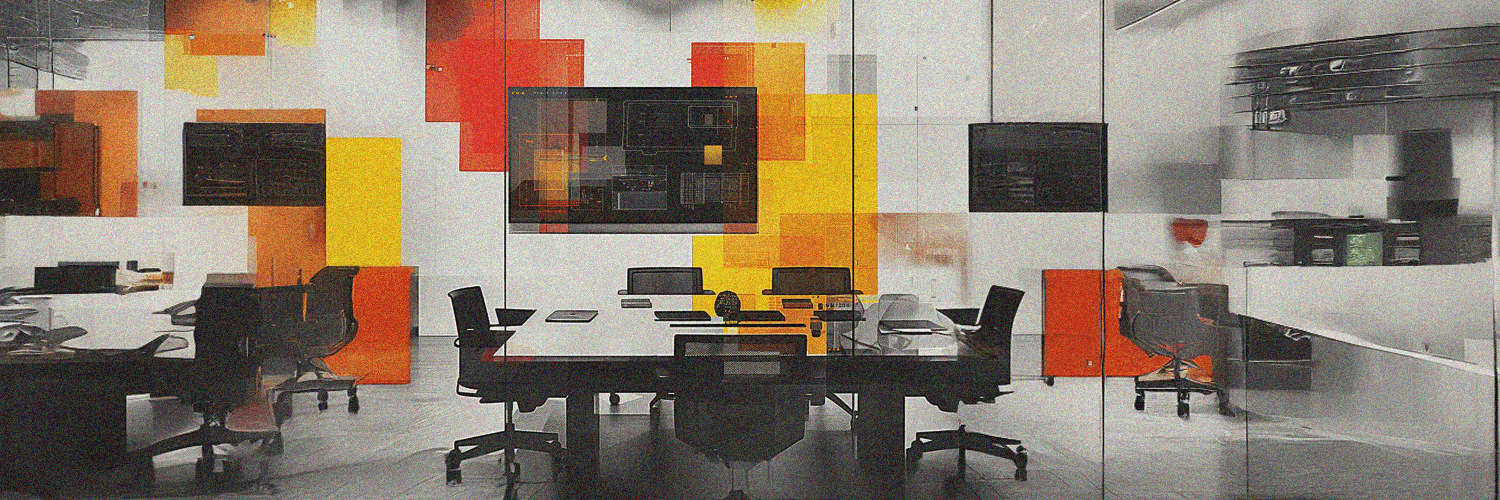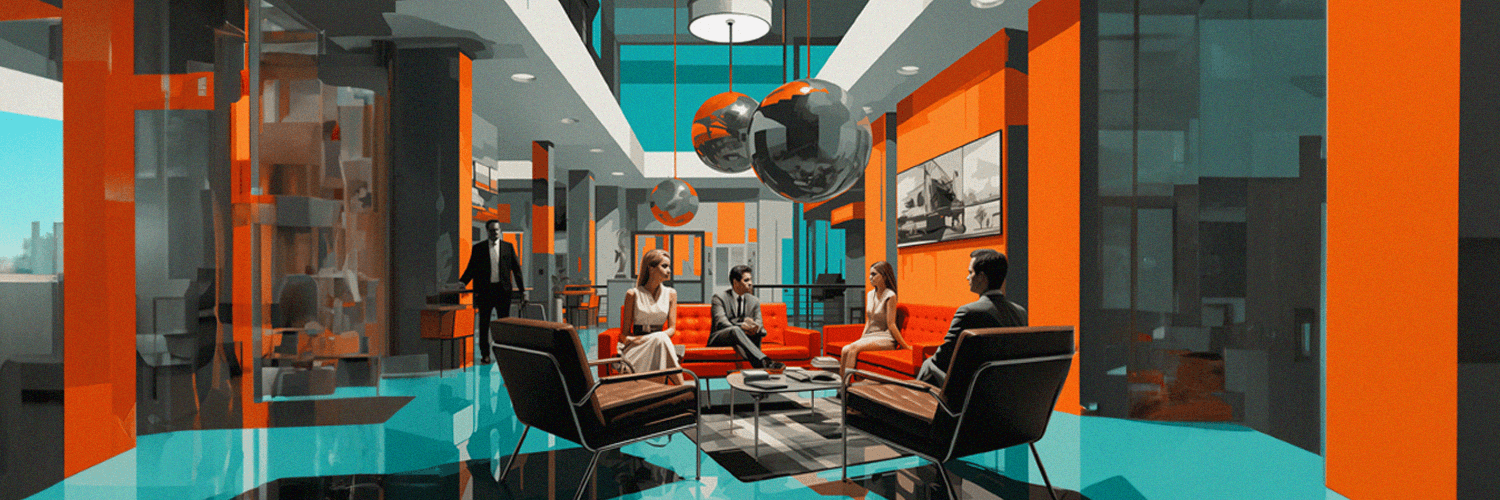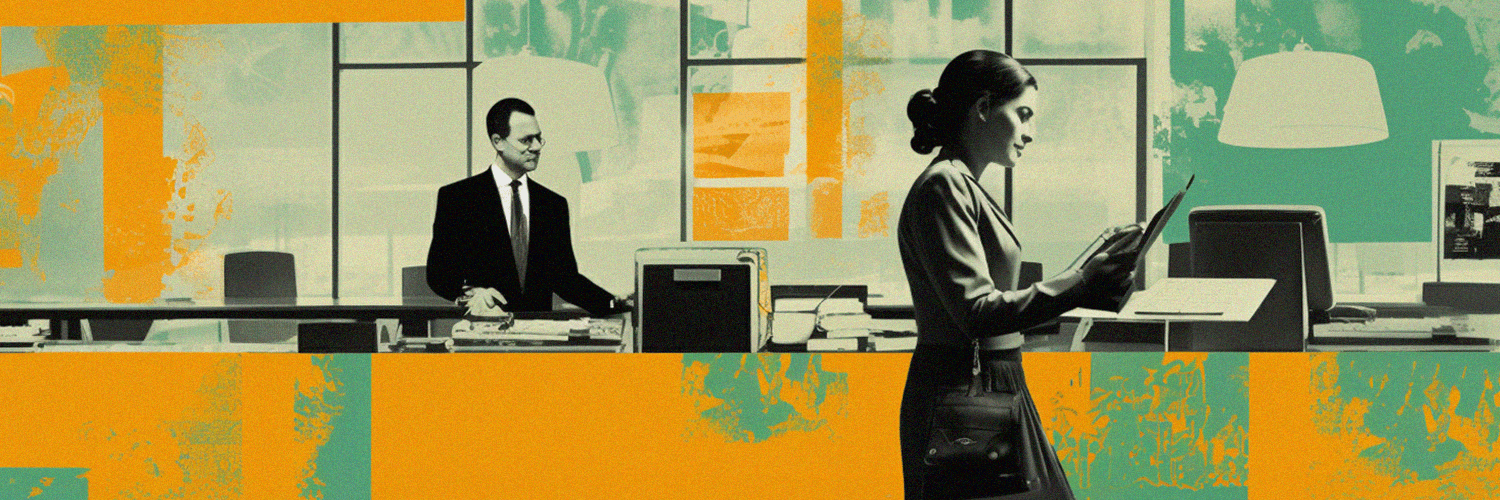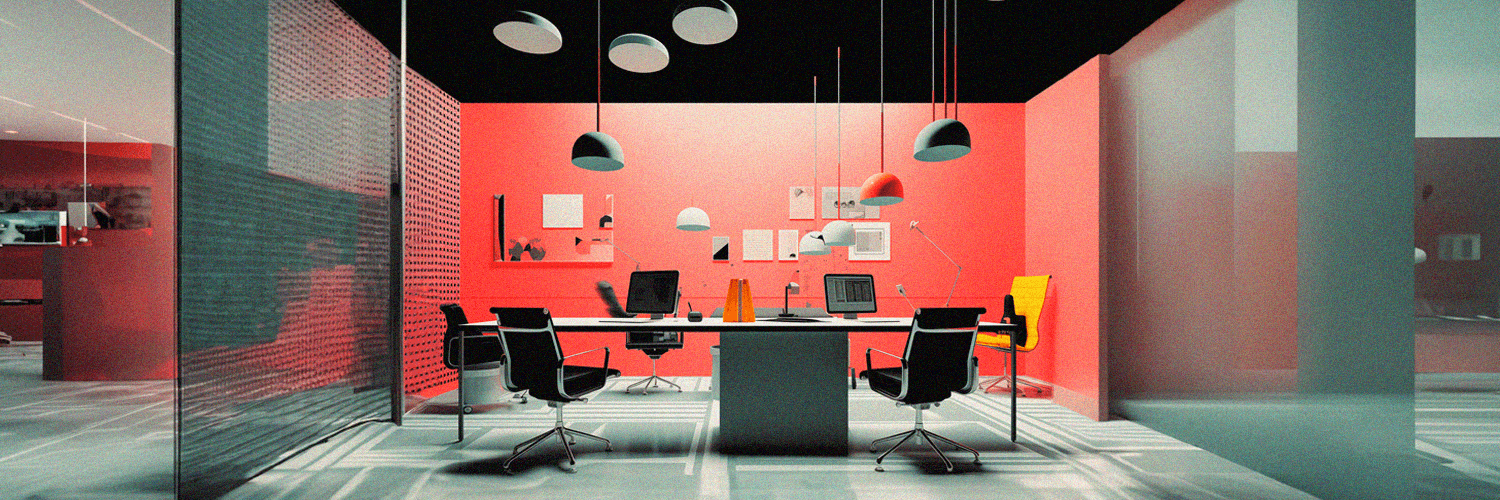Imagine stepping into a modern office where technology seamlessly integrates with your workday. You first notice a sleek, interactive display outside each conference room. Its dynamic colors immediately let you know whether the room is in use or available. This intelligent display shows up-to-the-minute schedules and available time slots, easily preventing scheduling conflicts and double bookings. It's a sophisticated tool that simplifies managing meeting spaces - the conference room scheduling display.
TL;DR:
- Conference room scheduling displays streamline meeting room management, reducing conflicts and boosting efficiency.
- These digital displays show real-time room availability and upcoming bookings, preventing double bookings and scheduling issues.
- Integrated with calendars like Google and Outlook, they ensure up-to-date information and seamless booking.
- Benefits include improved room utilization, enhanced employee productivity, and reduced time spent searching for available spaces.
- Challenges include technical issues, integration difficulties, and the need for maintenance and security measures.
- Top features to look for are calendar integration, user-friendly interfaces, and support for multiple languages.
- Advanced options like AI predictions, voice commands, and layered security are future trends in this technology.
- Popular choices for conference room displays include brands like IAdea, Apple, ProDVX, and Qbic, each offering unique benefits.
What is a Conference Room Schedule Display?
A conference room scheduling display is a digital tool used to manage and display conference room availability and reservation status. These displays are typically installed outside conference rooms or at strategic locations within an office or facility.
Conference room scheduling displays typically provide real-time updates on meeting statuses, offering a clear view of which time slots are currently booked, what meetings are coming up next, and when the room is available for impromptu meetings. They also allow on-the-go room booking right at the door, making it convenient for users to book a room immediately if it is available or to view future time slots without needing to access a separate device or system.
Connected to your company’s calendar—such as Google Calendar, Microsoft Outlook, or room booking software—these displays automatically sync and display the most up-to-date information.
Essentially, a well-designed conference room scheduling display acts as a silent assistant, playing a crucial role in reducing interruptions during meetings.

The Benefits of Having a Conference Room Schedule Display
A conference room scheduling display is more than just an electronic sign board indicating the status of a meeting room. This integrated solution presents an array of essential advantages for modern-day businesses. Below, we’ll explore these benefits more extensively.
Better Efficiency and Time Management
Conference room scheduling displays significantly streamline the process of locating and reserving meeting spaces. By having immediate visibility into room availability, employees can quickly identify and book free rooms directly at the door. This reduces the time spent searching for available meeting spaces and minimizes the chances of scheduling conflicts, leading to more efficiency in the workplace.
Improved Meeting and Conference Room Utilization
Conference room displays are not just about convenience, they also provide insightful data on room usage. This feature empowers organizations to monitor and optimize the utilization of their meeting spaces. By identifying underused rooms and time slots, companies can make informed decisions about space allocation and potentially reduce the need for additional meeting rooms.
Increased Transparency and Reduced Booking Conflicts
With the aid of conference room scheduling displays, the risk of double bookings and scheduling conflicts is significantly reduced. The clear visibility of meeting schedules and room availability allows employees to see at a glance when a room is booked and for how long, promoting transparency and better coordination among team members.
Convenient On-the-Go Booking
One of the major benefits of conference room display tablets is the ability to book rooms directly at the door. This feature is particularly useful for impromptu meetings or when a room suddenly becomes available, allowing for quick and convenient bookings without needing to access a computer or mobile device.
Enhanced Employee Experience and Productivity
Conference room scheduling displays contribute to a smoother and more efficient work environment. They minimize disruptions by clearly indicating when rooms are occupied and by whom, which helps to avoid unnecessary interruptions. This leads to a more organized workspace where employees can focus on their tasks without worrying about meeting logistics.
Overcoming Common Challenges with Conference Room Displays
Every technology presents challenges, and conference room scheduling displays are no exception. Understanding these issues and planning accordingly can smooth the path to successful implementation. Let’s explore some common problems with conference room displays and how we might overcome them to ensure an effective meeting environment.
Technical Issues and Reliability
Conference room displays can suffer from technical problems like software glitches, network connectivity issues, or hardware malfunctions. These problems can disrupt the booking process and cause frustration among users, mainly if they occur frequently or during critical times.
Integration Difficulties
Integrating conference room displays with existing calendar systems, such as Google Calendar or Microsoft Outlook, can be complex. Compatibility issues, synchronization problems, or data discrepancies can arise, leading to inconsistent information and scheduling conflicts.
User Adoption and Training
Employees may be resistant to adopting new technology or find the user interface of conference room displays confusing. Without proper training and support, users might struggle to utilize the displays effectively, resulting in underuse or misuse of the system.
Maintenance and Upkeep
Regular maintenance is required to ensure that conference room displays function correctly. This includes software updates, hardware repairs, and network maintenance. Keeping the displays up-to-date and operational can be time-consuming and costly for the organization.
Security Concerns
Conference room displays can pose security risks, such as unauthorized access to booking information or sensitive data. Proper security measures, like password protection and secure data transmission, are essential to prevent potential breaches and protect confidential information.
Although these challenges are possible, choosing the right technology—modern hardware paired with a smart conference room display app—can mitigate risks significantly.
For example, the Yarooms Room Panel application is designed to integrate seamlessly with any conference room display, ensuring reliable synchronization and real-time updates. With user-friendly interfaces and robust security features, it minimizes technical problems and reduces the need for extensive maintenance. Furthermore, it’s an intuitive solution, requiring minimal to no training, and is equipped with reliable security protocols to safeguard sensitive information.
By selecting such advanced conference room display solutions, organizations can effectively address potential challenges and focus on maximizing efficiency and productivity without concern.
Key Features to Look for in Conference Room Scheduling Displays
Don't rush your decision when considering a conference room scheduling display for your office space. Knowing the real must-have features that can help you optimize resource allocation and meeting coordination is crucial. To guide you in this pursuit, here's an overview of key components you should ponder when evaluating these hi-tech tools.
Integration Capabilities with Existing Calendar and Booking Systems
One feature that separates premium conference room displays is their integration capabilities with existing calendar and booking systems. Organizing meetings becomes smoother if the display device can communicate effectively with platforms you already use daily.
How does it work? Through software synchronization, these devices pull information about reserved and available slots straight from your digital calendar, showing real-time updates on screen. An integrated system will reduce manual processing, thus mitigating discrepancies, double bookings, or overlapping schedules.
Friendly Interface for Easy Interaction
The user interface design of your chosen conference room display plays a significant role in determining how beneficial its performance will be in practice. Here's where good functionality embraces aesthetically pleasant architecture – a friendly interface imperative for easy interaction by all users. A touch screen allowing quick booking right at the door can save time, while straightforward visual cues (such as color changes signifying occupied or free rooms) facilitate understanding availability at a glance.
Time Updates and Notifications for Booking Changes and Cancellations
Meeting plans frequently alter - last-minute rescheduling, cancellations, or extensions are almost inevitable. Henceforth, having live time updates on room occupancy status is no less than essential for efficient maneuvering amidst all the hustle and bustle of the workplace! Providing instant notifications about booking changes keeps everyone informed, reducing conflicts over room usage and preventing unnecessary bookings of empty rooms.
Language Support and Accessibility Features
A versatile conference room scheduling display should offer multiple language support, catering to a diverse workforce within multinational organizations or in regions with a multilingual population. Additionally, incorporating accessibility features such as adjustable font sizes for those with visual impairments, voice commands for hands-free use, and screen reader compatibility for the blind or visually impaired significantly enhances usability. Let’s be wise and remember – tech tools are only as good as their ease of use for everyone!
Durability and Energy Efficiency Considerations
Lastly, practical factors cannot be overlooked. Durable hardware that stands up well against constant interaction is the foundation on which any touch-display technology thrives. Then comes consideration for energy consumption – an efficient device aligns with your workplace sustainability efforts and aids cost control in the long run.
Top Picks: Top Conference Room Schedule Display Tablets
We previously highlighted the Yarooms Room Panel app, a versatile and hardware-agnostic solution that seamlessly integrates with various devices, offering flexibility and choice. We want to share some of our top recommendations for excellent hardware manufacturers that provide conference room scheduling displays. These suggestions are in alphabetical order and are intended to assist those seeking the best options for their workplace needs.
IAdea
IAdea provides robust digital signage solutions with displays specifically designed for conference room applications. These displays are known for their reliability, ease of use, and compatibility with various signage software, making them ideal for professionally displaying conference room schedules, announcements, multimedia content, and more.
.png?width=3840&height=2160&name=Yarooms%20Busy(2).png)
iPad
The iPad, especially in its Pro variant, is a versatile, high-resolution touchscreen display suitable for conference rooms. With its sleek design, powerful A-series processors, and extensive app ecosystem, it excels in productivity and collaboration tasks. It seamlessly integrates with Apple’s ecosystem for video conferencing, note-taking, and room scheduling display apps.

ProDVX
ProDVX offers a range of professional displays tailored specifically for meeting room environments. These displays feature durable touchscreens and customizable interfaces and are suitable for various applications, from simple schedule displays to complex interactive conference tools.
.png?width=750&height=500&name=In-article%20image%20(1).png)
Qbic
Qbic conference room displays are known for integrating smart technology with touchscreens that offer crisp, clear visuals. Designed to foster interactive and connected environments, these displays feature intuitive indicators and wide-angle panels, allowing for effortless availability checks that minimize downtime and boost efficiency. Their compatibility with various meeting room management software ensures streamlined meeting coordination.

If you need a very durable display that's quick to install, each of the recommended options offers unique benefits suited to various corporate needs. Use this information to help you choose the best meeting room display, which can greatly improve your room management.
Remember, there's no single best solution for all companies because each one has different needs. But you can be confident that there's a display out there that fits your requirements and will make your office better. Stay informed about the latest advances in conference room management by keeping an eye on new products as they come out.
Setting Up Your Conference Room Display System
Setting up a conference room schedule display can seem daunting, but it's more straightforward than it appears:
- Determine the Purpose: Decide if the system will primarily manage meeting schedules, provide digital signage, or fulfill both roles.
- Choose a Display:
- Select a display with features that meet your needs.
- Ensure it has an intuitive interface.
- Check compatibility with platforms like Google Calendar or Outlook.
- Integrate with Existing Systems:
- Ensure the display can link seamlessly with your current calendar or booking systems.
- Verify support for real-time updates.
- Confirm that the display can show instant notifications for changes like reservations, cancellations, or time extensions.
- Install the Display: Set up the display in the conference room or relevant location, ensuring it's accessible and visible.
- Configure On-Site Controls: Make sure easy booking controls are accessible directly on the display for quick adjustments.
- Provide Training: Offer training sessions for users to familiarize them with the new system and its features.
- Ensure Aesthetic Integration: Consider the design and layout to maintain a professional appearance in the shared space.
- Test and Refine: Run tests to ensure everything works smoothly and make necessary adjustments based on feedback.
By following these steps, you can successfully set up a modern conference room scheduling display that enhances efficiency and aesthetics in your workspace.
Innovative Uses of Conference Room Schedule Displays Beyond Meeting Management
When we think about conference room screens, our mind often leans towards their mundane functions: displaying the meeting schedule, noting the room's status (booked or free), and easing the booking process. But as with any other formidable technology, there are creative and outside-the-box ways to use these digital assets beyond their typical utilities.
This versatility is particularly true for conference room scheduling displays, which offer numerous possibilities for enhancements in the corporate space. Let's look at two interesting examples: enhancing visitor experiences with interactive elements and leveraging displays for internal communications and announcements.
Enhancing Visitor Experience with Interactive Elements
First, let's talk about enhancing your visitor's experience with innovative uses for conference room screens. You can turn a basic conference room availability screen into an engaging tool that helps visitors navigate your office independently by utilizing touch-screen capabilities and dynamic content displays.
For example, a new client visiting your office and needing to find the finance department can use digitized floor maps with wayfinding capabilities integrated into interactive displays located at strategic points throughout the building. This allows them to confidently navigate hallways and floors without constant staff assistance.
Additionally, adding personalized welcome messages for each visitor can create a warm and inviting atmosphere. Displaying company news or presentation reels during idle times can subtly showcase your organization's achievements and culture. These thoughtful touches make visitors feel welcomed and valued, which can significantly strengthen business relationships.
Leveraging Displays for Internal Communication and Announcements
Beyond their primary function as conference room reservation displays, these digital tools are excellent for internal communications. They offer real-time channels for efficiently broadcasting essential updates, announcements, or reminders to the entire team. Think of it this way: everyone can see an announcement displayed on these screens instantly, avoiding the pitfalls of traditional methods like emails or bulletin boards, which might be overlooked or ignored.
Additionally, these digital signs can be customized with different categories such as "Department News," "HR Updates," and "Company Events," enhancing visibility and helping staff absorb information more effectively. You can also use smart lobby display applications to showcase all bookings and events happening in the office, keeping everyone updated on the latest workplace activities and events.

Future Trends in Conference Room Management Technology
Navigating workplace technology is exciting, with constant advancements. One area seeing rapid growth is conference room scheduling displays or meeting room booking software. Here are some future trends to watch:
- Artificial Intelligence Capabilities: AI could predict meetings based on previous patterns, enabling auto-booking features.
- Mobile-Conference Integrations: Enhancements in mobile technology will support the increasing number of remote workers, projected to reach 36.2 million in the U.S. by 2025.
- Layered Security Systems: Integrated security systems will ensure data safety and privacy within conference room reservation systems.
- Voice-Assisted Commands: Voice commands will allow hands-free use of scheduling systems.
These advancements promise more productive, seamless, and innovative workspaces. Consider how integrating these technologies could benefit your office and ensure you stay ahead in the digital transformation journey.
FAQs on Conference Room Scheduling Displays
As you delve into the world of conference room scheduling displays, there is a good chance you have some questions. We're here to provide clear answers and help guide you through this technological labyrinth.
How Do I Choose the Right Conference Room Display for My Office?
Choosing the right conference room display may seem daunting, with many factors at play. Start, of course, with exploring your office's unique needs. In addition to considering the size of your conference room and available budget, keep an eye out for certain key features. A friendly interface that's easy to interact with and real-time updates and notifications for booking changes and cancellations are among those vital traits.
Another important aspect to consider is the system's ability to seamlessly integrate with your existing calendar systems. This flexibility, along with language support for diverse workplaces, and considerations around durability and energy efficiency, ensures that the system can adapt to your unique office environment. Remember, there isn't a one-size-fits-all solution for every organization.
Can Conference Room Schedule Displays Integrate with Google Calendar or Outlook?
Absolutely! Integration capabilities with preexisting calendar systems rank as one of the top features sought after in a meeting room schedule display system. Whether it's Google Calendar, Outlook, or any other digital planner your organization uses, being able to neatly tie together all constituents really makes the magic happen, averting confusion over double bookings or vacant rooms being perceived as engaged.
What Are the Costs Involved in Setting Up a Conference Room Display System?
The cost of setting up a conference room display system can vary depending on several aspects, such as brand value, product features, installation complexities, or whether ongoing subscriptions apply. Overall expenditure typically includes three components: the hardware (aka your physical display screen), software that drives the system, and any installation or maintenance services you opt for. It's fair to say that this is an area where due diligence can set you in good stead for an enduring investment over the long term.
-
So there we have it! Conference room scheduling displays may seem initially complex, but their core components are manageable and incredibly beneficial tools for office organization. Do your homework, plan accordingly based on your unique needs, integrate thoughtfully with pre-existing systems, and consider all costs involved – just as you would with any significant decision. If carefully implemented, such devices become an essential cog in enhancing workplace productivity and efficiency. Good luck in finding your perfect fit!


.png)









